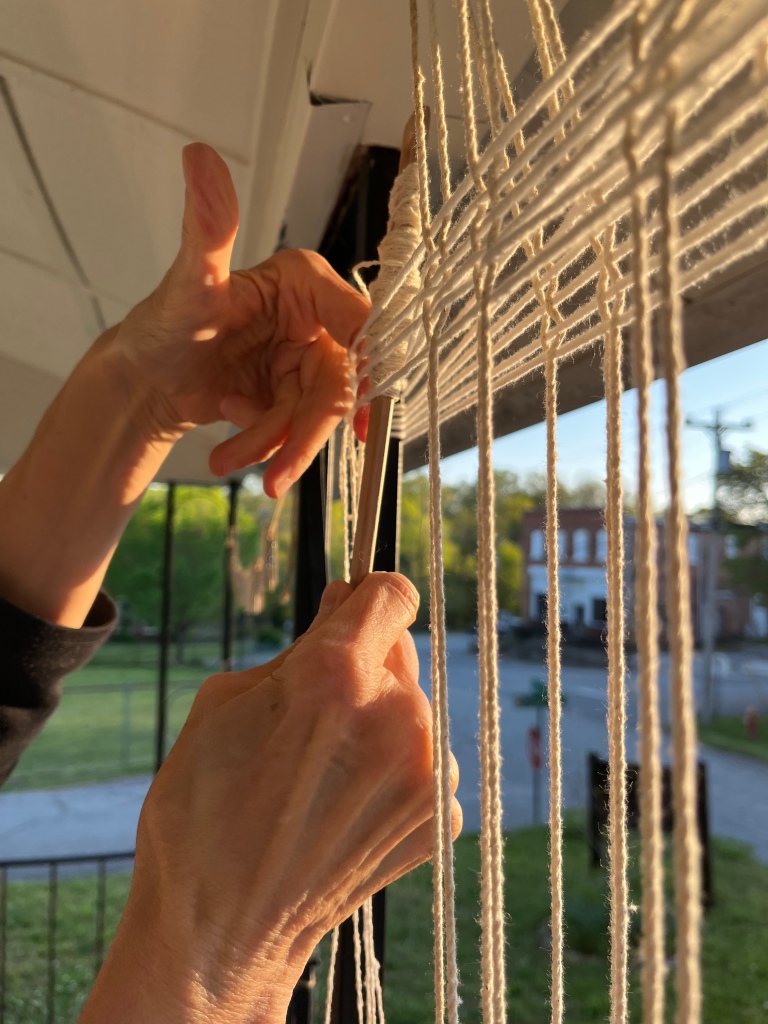Works in progress / experiments
from Goodall Environmental Center, Wofford College, SC
Art-science residency, April 2023
In spring of 2023, I participated in a residency at Wofford College Goodall Center for the Environment with city planner and writer Olga Ronay. We explored this site of a former cotton mill at what was the heart of spindle density during the peak of cotton production in the southeastern United States. We are grateful to Wofford College for hosting us for two weeks.
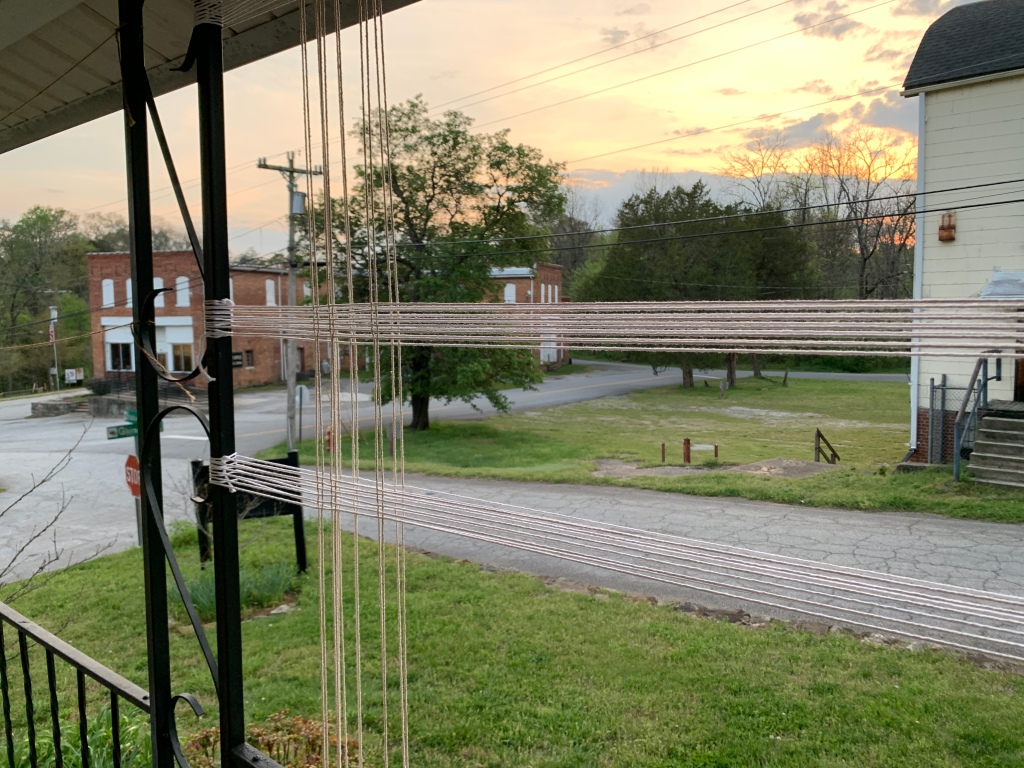
Things I learned & thought about while making
Erosion
When settlers migrated to the area from the British Isles and the Northeast of the US, they brought agriculture practices better suited to glacial till: they oriented crop rows downhill. Using this practice, their home soil had stayed intact and drained well, but the red clay “ultisols” of the southeast region cut like butter. The resulting erosion destroyed the fertility of the land.
Knick Points
Mill towns were abundant in the hilly Piedmont region because mills needed a certain slope of the river to drive the machinery. Most mills were located along river shoals, or “knick points” on the stream.

Exploitation on both sides
To run the mills with cheap labor, mill owners employed struggling Appalachian families, including children. The mills were sandwiched between two cultures from which they exploited labor — Appalachian laborers from the northwest and enslaved Africans growing the cotton to the southeast, primarily in the coastal plain.
Unfinished Goods
I explored these ideas using cotton table linens, cotton thread, ink and watercolor or various papers, and other media. For drawing I use blind contour, looking only at the subject and not at the paper. Blind contour encourages slow and careful observation and generates weird lines that are pure artifacts of attention.
The mill at Glendale primarily produced “greige goods,” or unfinished goods. These are my unfinished goods:
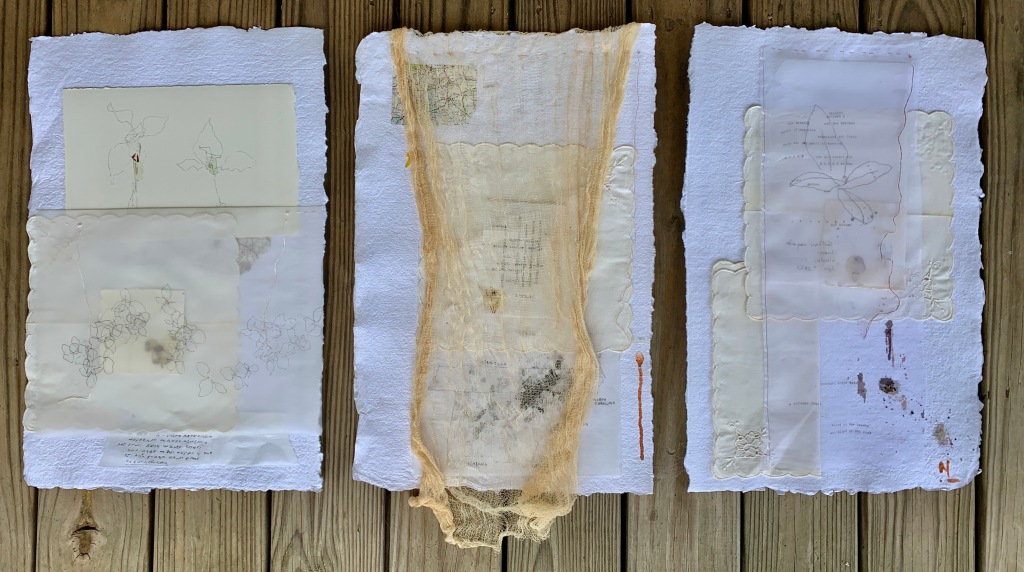
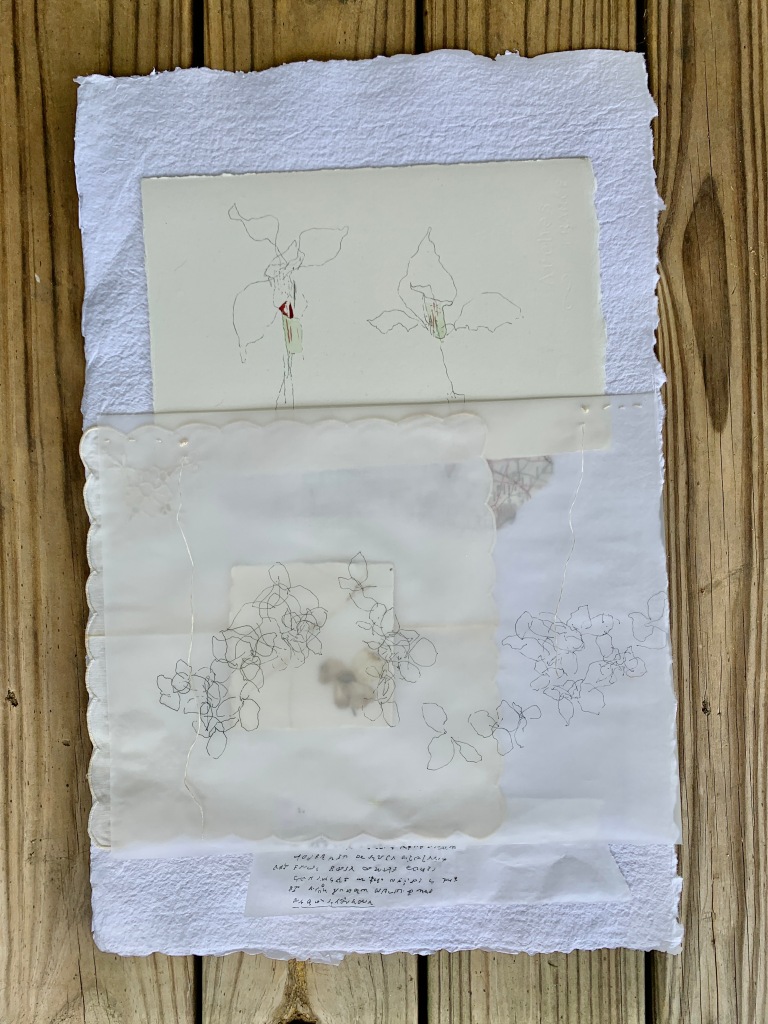

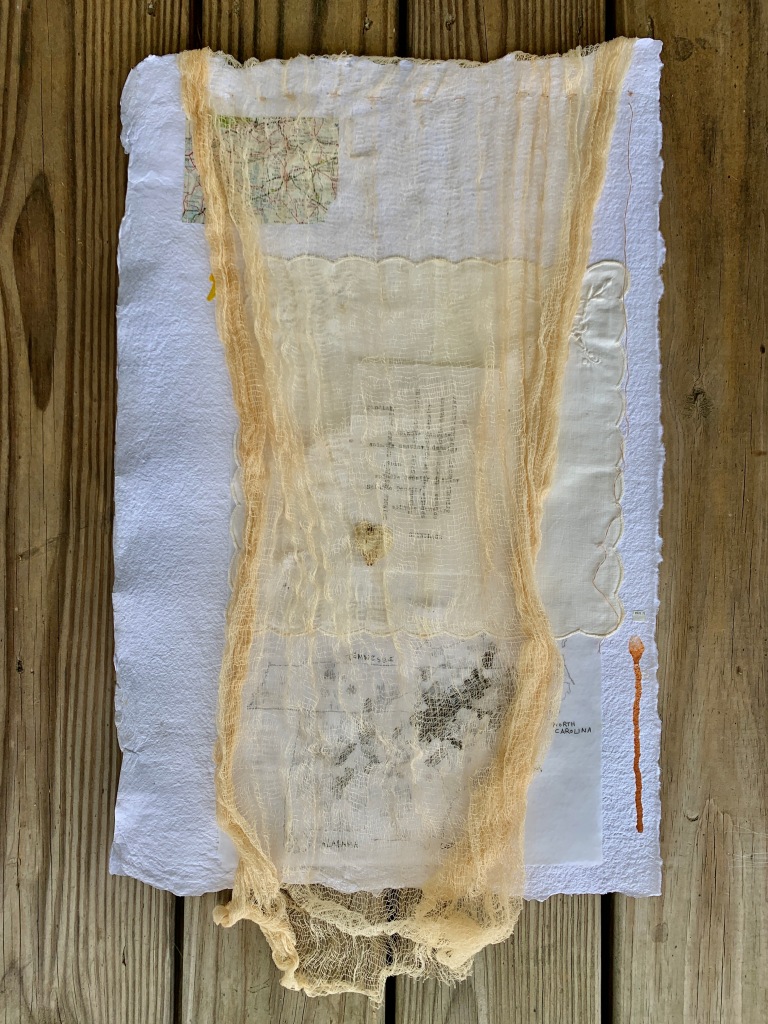



.
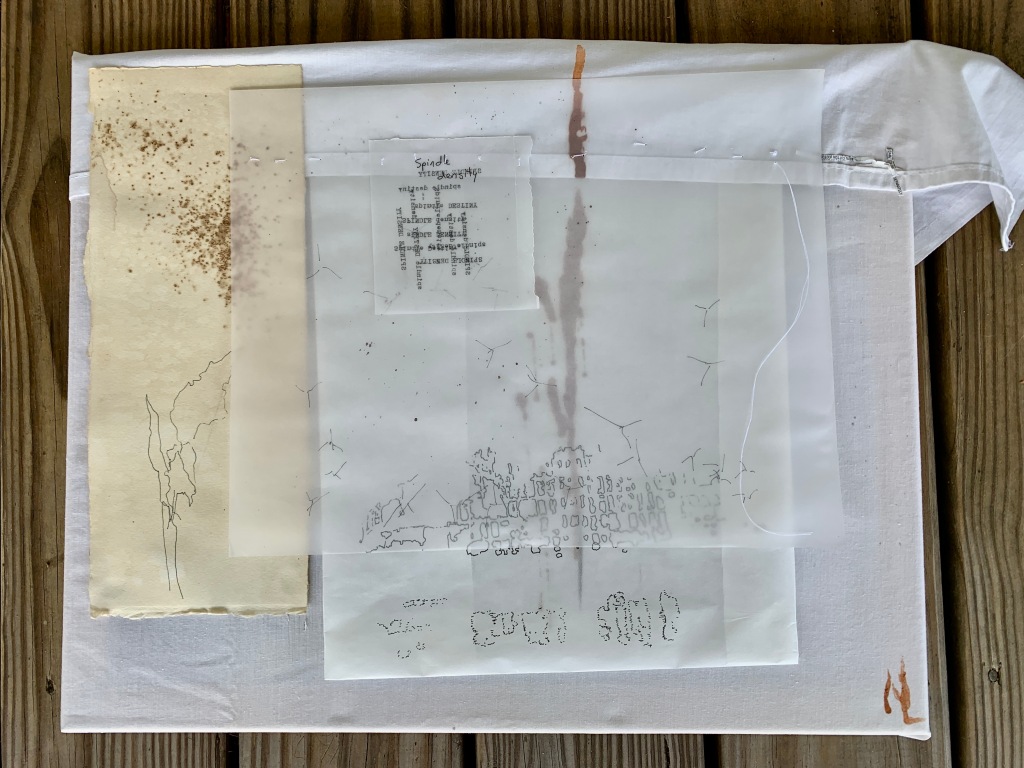
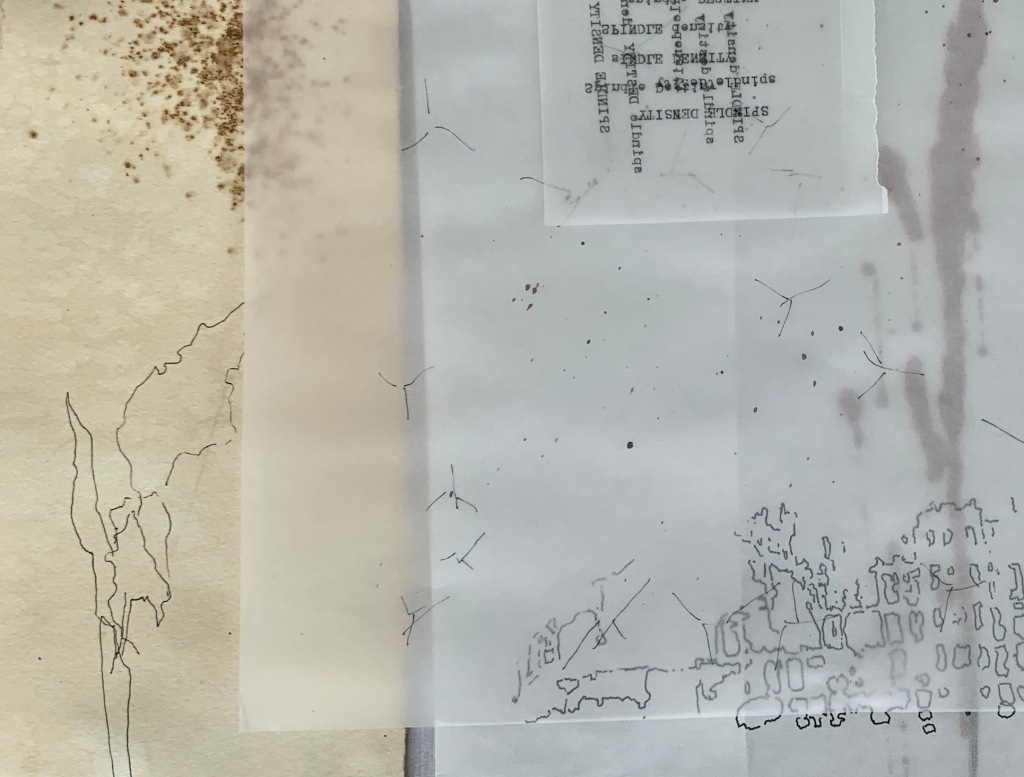
.
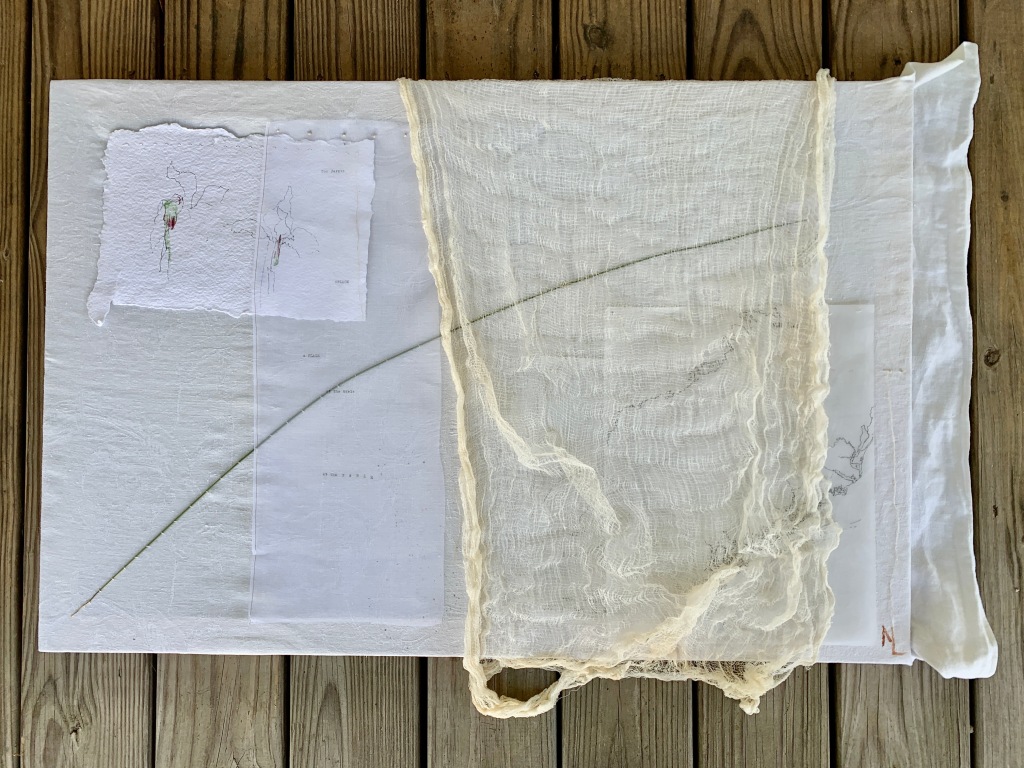

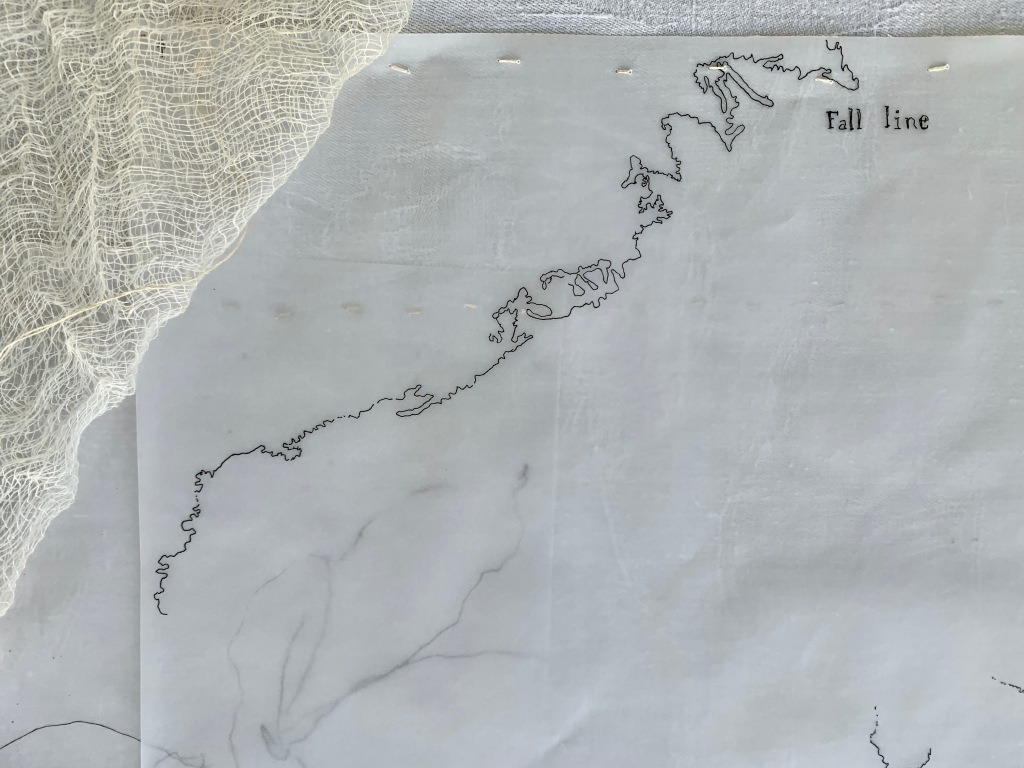
.


.
